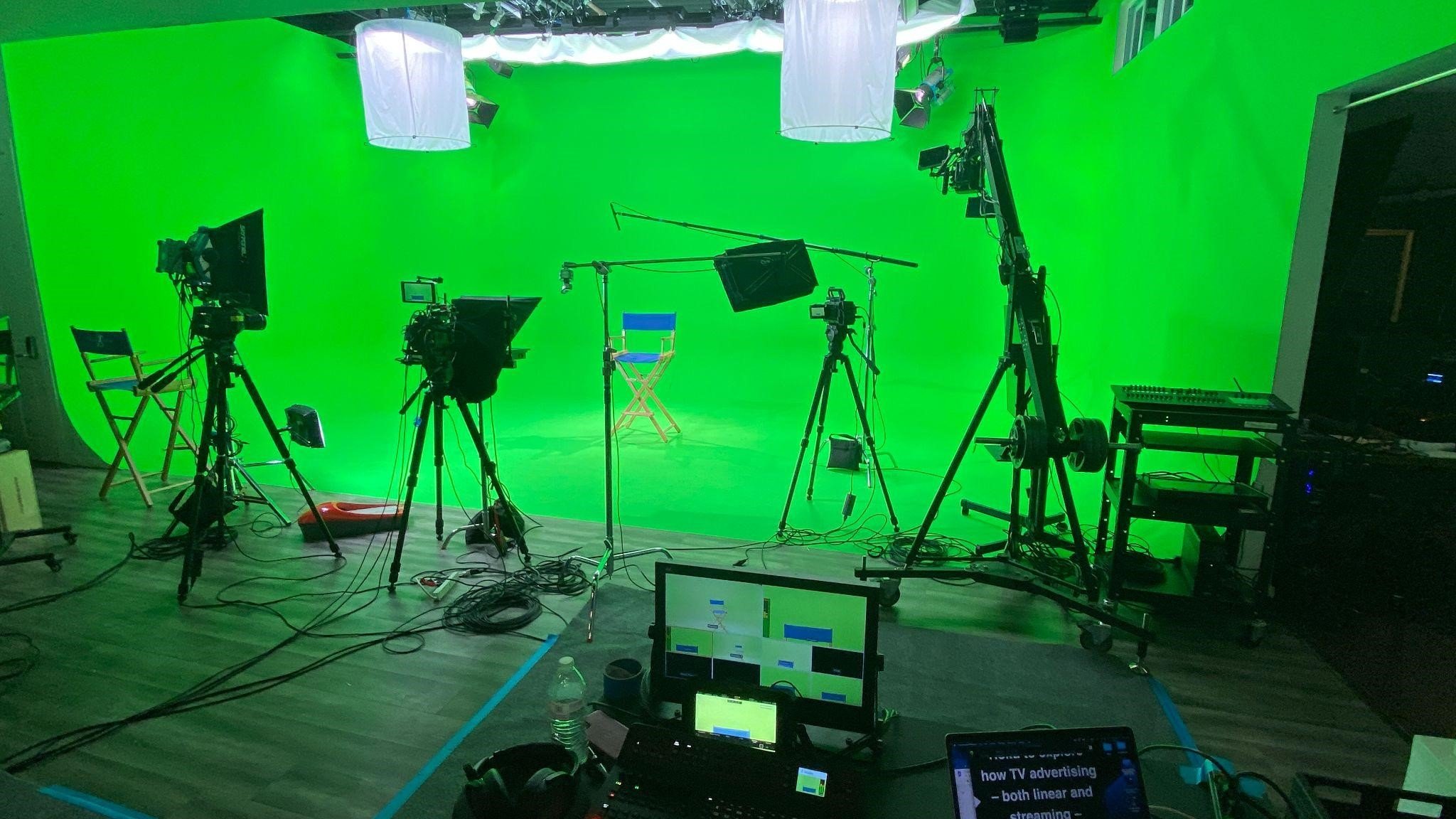Forbes Magazine “Why XR Is The Next Big Thing In Corporate Video Production”
Extended Reality(XR)
I have seen a recent uptick in requests for XR studios across diverse sectors, indicating that the technology has now matured enough to go mainstream.
Whether or not to create an XR studio depends a lot on the industry and the use cases. The primary argument for creating an XR studio is flexibility. But the upfront costs versus the benefit of an XR studio might be out of balance for smaller companies.
Extended reality (XR) is one of the most exciting technologies I’ve seen developed in my 20-plus years in broadcast scenic design and architecture. We are in discussions with multiple clients who are asking how this technology can be used to create new and exciting forms of content.
XR broadcast studios are big-ticket investments that revolutionize the way corporations can produce video content. With an XR studio, companies can leverage 3D graphics to be able to present from any environment, and even interact with that environment. Think the Weather Channel, but on a smaller scale.
What is XR in video production?
XR is an umbrella term that encompasses all types of computer-generated graphics and environments. But it has a special meaning within broadcasting.
In a broadcast setting, XR is generally understood to be the creation of virtual environments using an LED wall, and sometimes a ceiling or floor, with real presenters on the stage. The cameras used for filming the XR scene are fitted with motion sensors so that the perspective of the scene behind the presenters changes according to where the presenter is standing.
Technically speaking, similar effects could be achieved using a green screen, but the benefit of an LED setup is that the presenters can actually see the environment they are in while they are presenting. In a green screen setup, only the audience will see the environment, and even then only after post-production.
The other benefit of using LED instead of a green screen (which is technically called chroma keying) is the spectacular effect of ambient lighting that the LED screens provide. If you want to put your presenter in a desert at sunset, the lighting emanating from the LED screens will reflect beautifully and realistically off the presenter’s skin.
With chroma keying, that effect has to be produced digitally in post-production, which is incredibly resource-intensive and not always as good.
What are the BENEFITS of an XR studio?
An XR studio is all about the tech. There are few to no physical objects in the studio. 3D artists digitally create the scenery and environment. This frees up a company to make any content and change it regularly. The environment and interactive elements of an internal corporate briefing could differ entirely from a product demonstration for the general public, even though the same studio is being used.
For product demonstrations, 3D versions of products can be created, made to spin, disassembled, and reassembled. And the setting for product demonstrations can be taken to a whole new level.
Who is an XR studio for?
XR studios are excellent for educational and training briefings because presenters can bring their topics to life with 3D models that can spin, open up, move around and so on.
We are currently helping a company use XR for remote, on-the-job training that requires the trainee to interact with the physical object. The trainer is in the XR stage with the physical object, and trainees can put VR glasses on to be in the same virtual room as the trainer.
Similarly, data-driven content can be brought to life vividly in an XR studio. Graphs, charts, numbers and statistics can be shown in exciting new ways to keep viewers engaged, such as by making the charts grow while the presenter talks.
Because XR is so new, there is also an inherent “wow” effect for the viewer. Companies that invest in this technology early can capitalize on that effect before XR becomes mainstream.
What are the challenges of an XR studio?
The infrastructure required to support an XR studio is also different to a traditional studio. A lot more electrical power and data cables are needed to support an XR studio. Companies need to invest in this infrastructure upfront.
Running the studio also requires trained employees. You will either need to invest in educating your current staff to be able to run the XR studio or find a partner to help run it. Additionally, you do not necessarily need to invest in a whole studio but could instead rent time in an existing XR studio.
Are the costs of an XR studio worth it?
An XR studio empowers any company to bring its broadcasts to life. Budget meetings can be turned into exciting events with graphs and charts appearing in both the foreground and background, with presenters interacting with both. The presenter’s surrounding environment can be changed depending on the topic, just like they do on the Weather Channel.
Topics can be made far more exciting through interactive elements and excellent 3D visuals that are relevant to the presentation. XR studios make data presentations experiential.
Large corporations that tee up the initial investment for an XR studio today can reap the rewards tomorrow as a result of the immense flexibility that an XR studio brings to video production. But the support staff and 3D design team must be excellent for that initial investment to be worth it.




